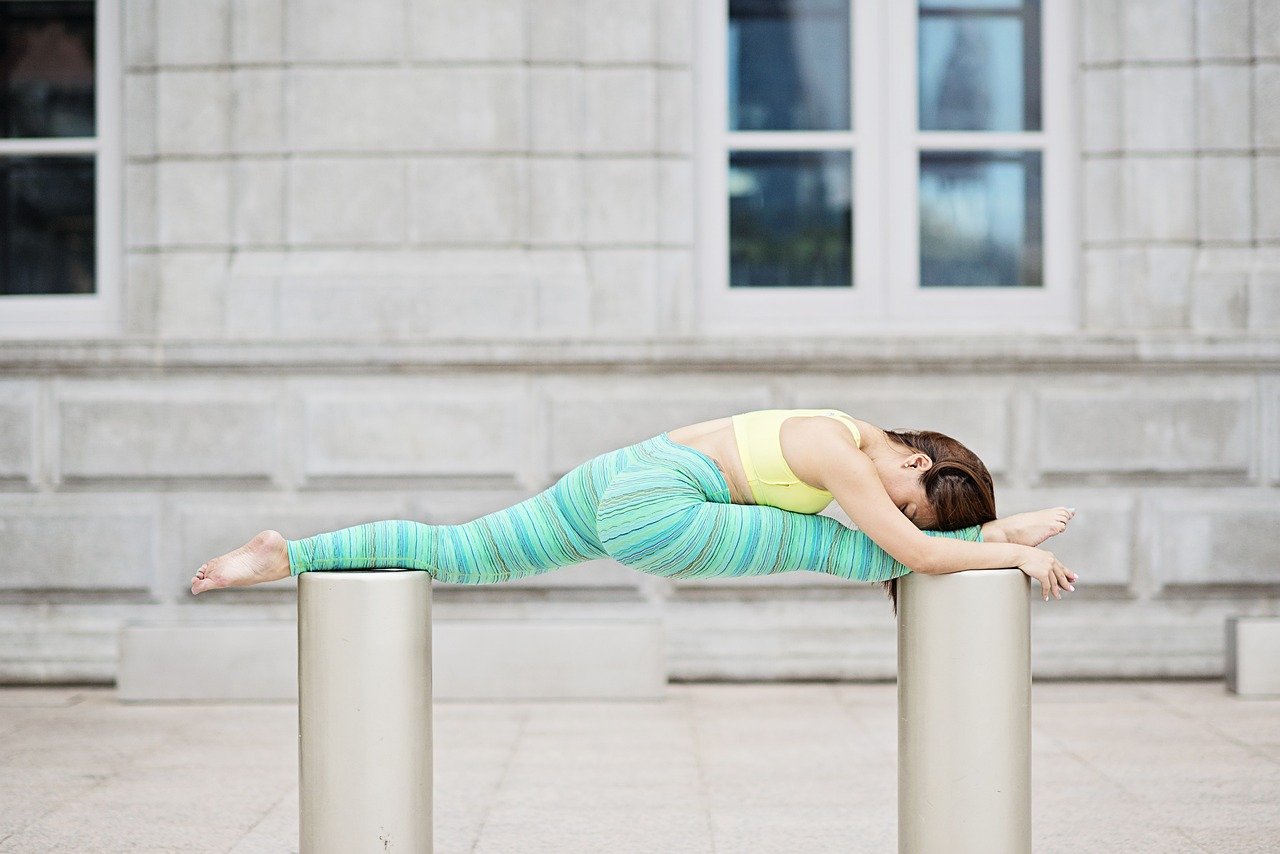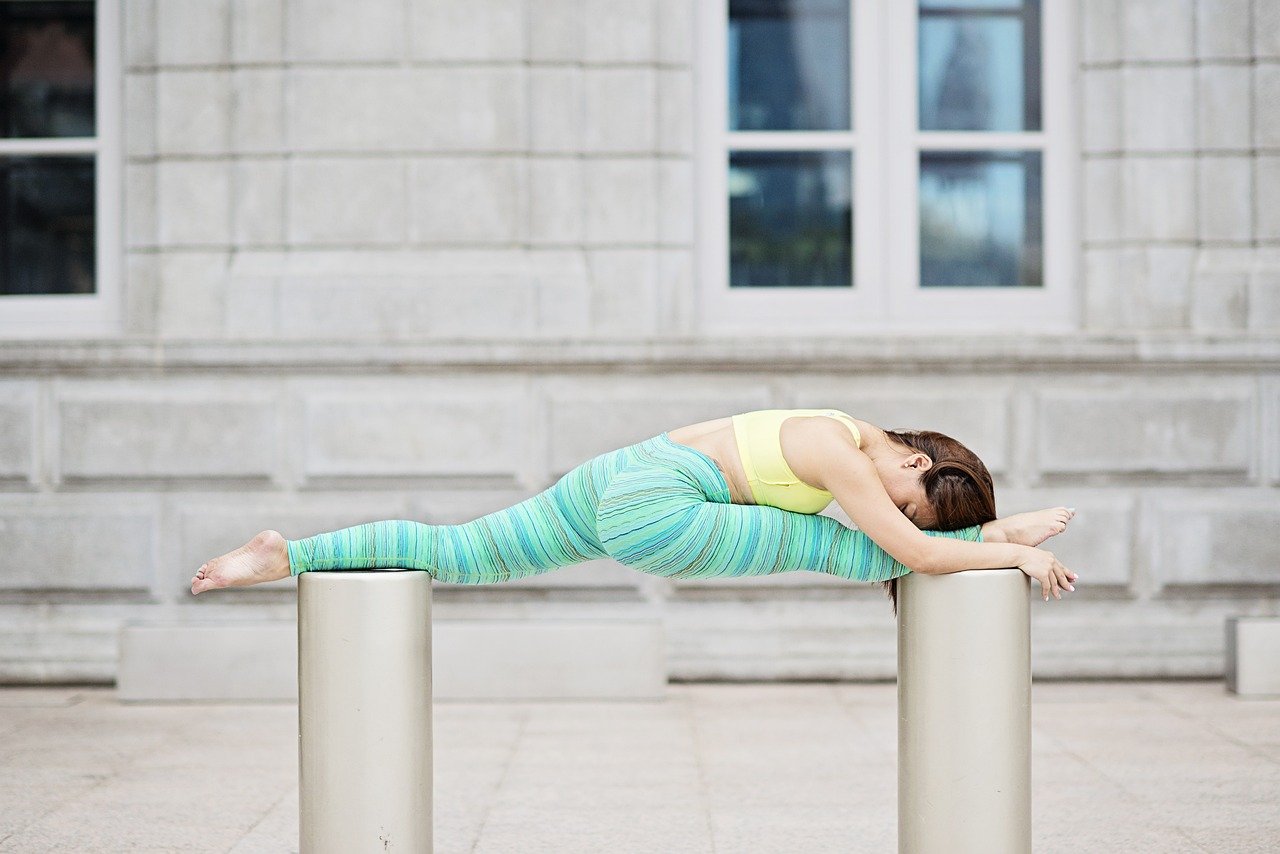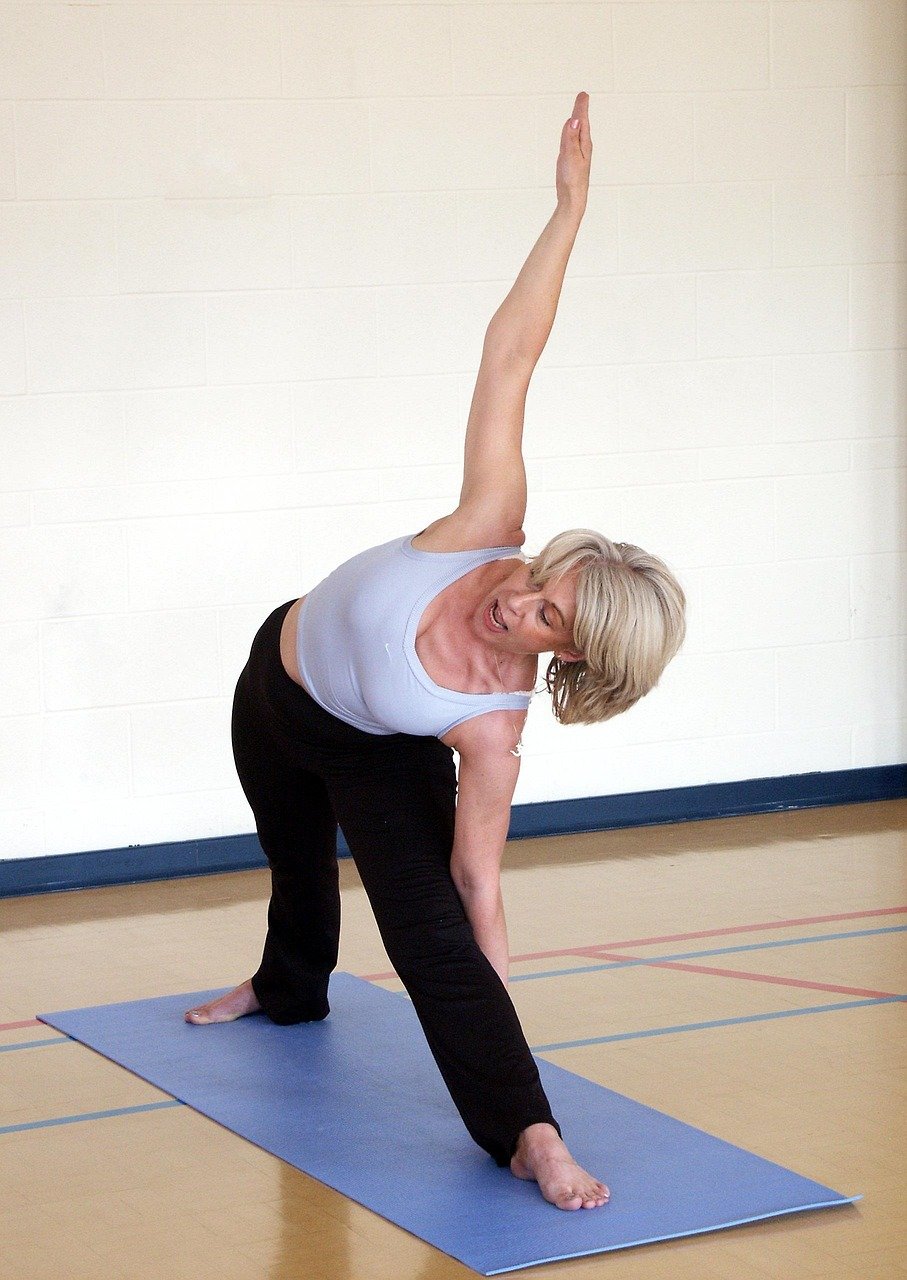
Do you ever wake up feeling stiff and achy? It could be due to poor posture, which can affect your overall health and wellbeing. In this article, we will explore how getting better sleep can actually improve your posture. Learn the best sleeping positions and tips to align your spine, relieve tension, and wake up feeling refreshed and rejuvenated. Say goodbye to those morning aches and pains and say hello to better posture and a healthier you.

The Relationship Between Sleep and Posture
Understanding the importance of good posture
Having good posture is essential for maintaining a healthy musculoskeletal system and overall well-being. Proper alignment of the spine, joints, and muscles allows for optimal function, reduces the risk of injury, and promotes efficient movement. But did you know that sleep also plays a crucial role in maintaining good posture? Understanding the relationship between sleep and posture is vital for ensuring a restful night’s sleep and preventing postural problems.
Exploring the impact of poor sleep on posture
Poor sleep quality or inadequate sleep can have a significant impact on your posture. When you don’t get enough restful sleep, your muscles and joints may become tense and fatigued. This can result in poor posture as your body tries to compensate for the lack of support and stability. Over time, consistently poor sleep can lead to chronic postural problems, such as rounded shoulders, slouched back, and misaligned spine.
How sleep affects the musculoskeletal system
Sleep plays a crucial role in the repair and recovery of your musculoskeletal system. During sleep, your body goes through various stages, including deep sleep and REM sleep, which are essential for tissue repair, muscle growth, and overall restoration. Lack of quality sleep can disrupt these processes, compromising the health of your muscles, bones, and joints. This can lead to weakened muscles, decreased bone density, and imbalances in the musculoskeletal system, ultimately affecting your posture.
Identifying Postural Problems Associated with Poor Sleep
Common postural problems caused by inadequate sleep
Inadequate sleep can contribute to a variety of postural problems. One common issue is forward head posture, where the head extends forward in front of the shoulders, straining the neck and upper back muscles. Rounded shoulders and hunched back are also prevalent postural problems associated with poor sleep. These issues can cause muscle imbalances, pain, and reduced range of motion.
The link between sleep position and posture
The position you sleep in can greatly influence your posture. Certain sleep positions, such as sleeping on your stomach or in a twisted position, can place stress on your spine, neck, and shoulders, leading to postural problems. On the other hand, sleeping on your back or side with proper alignment can support the natural curves of your spine and promote better posture.
Recognizing the signs of poor posture
Being aware of the signs of poor posture can help you identify and address any postural problems caused by inadequate sleep. Look out for symptoms such as persistent neck or back pain, muscle stiffness, headaches, and fatigue. If you notice any of these signs, it’s essential to take steps to improve your sleep quality and address your posture for optimal well-being.

Choosing the Right Sleeping Position for Better Posture
The pros and cons of different sleeping positions
Different sleeping positions have varying effects on your posture. Each position has its pros and cons, and choosing the right one depends on your individual needs and comfort. Sleeping on your back is generally considered to be the best position for optimal spinal alignment and posture. It helps distribute your body weight evenly, reducing pressure on your joints and preventing imbalances. Sleeping on your side can also be beneficial, especially for those with certain health conditions like sleep apnea or acid reflux. However, it’s important to keep your spine aligned and avoid excessive twisting or bending while side sleeping. On the other hand, sleeping on your stomach can strain your neck and lead to postural problems, so it’s best to avoid this position.
Understanding the neutral spinal alignment
Maintaining a neutral spinal alignment is crucial regardless of your sleeping position. The neutral alignment refers to keeping the natural curves of your spine aligned while you sleep. This means maintaining a slight curve in your lower back (lumbar spine), a gentle curve outward at your upper back (thoracic spine), and a slight inward curve at your neck (cervical spine). Proper alignment helps minimize strain on your muscles and joints, reducing the risk of postural problems.
Adjusting your sleeping position for optimal posture
If you’re struggling with poor posture due to inadequate sleep, making adjustments to your sleeping position can make a significant difference. Start by choosing a supportive mattress that provides the right amount of cushioning and firmness for your needs. Use pillows strategically to support your head, neck, and spine in alignment with your sleeping position. Experiment with different combinations of pillows or consider using specialized orthopedic pillows designed to promote optimal spinal alignment. Be mindful of any discomfort or strain in your body and make adjustments accordingly to find the most comfortable and posture-friendly position for a restful night’s sleep.
Investing in the Right Mattress and Pillow
The importance of a supportive mattress
Investing in a supportive mattress is crucial for maintaining good posture during sleep. A high-quality mattress that provides proper spinal alignment and adequate support can help alleviate pressure points and prevent musculoskeletal imbalances. Choose a mattress that suits your preferred sleeping position and body type, ensuring it offers the right balance between comfort and support.
Considerations for selecting an appropriate pillow
Having the right pillow is equally important for promoting good posture during sleep. Your pillow should support your neck and head, keeping them aligned with your spine. The height and firmness of the pillow depend on your sleeping position and personal preferences. Side sleepers might benefit from a higher and firmer pillow to fill the gap between their neck and shoulder, while back sleepers may require a lower and softer pillow to maintain a neutral spinal alignment.
Using additional sleep aids to improve posture
In addition to a supportive mattress and pillow, there are various sleep aids that can help improve your posture during sleep. Mattress toppers, foam inserts, or lumbar rolls can provide additional support to specific areas of your body, such as the lower back. These aids can help maintain proper spinal alignment and alleviate pressure points, leading to better postural health.

Establishing a Sleep Routine for Better Posture
Creating a consistent sleep schedule
Establishing a consistent sleep schedule is essential for promoting good posture. Aim to go to bed and wake up at the same time every day, even on weekends. This helps regulate your body’s internal clock and promotes deep, restorative sleep. By sticking to a regular sleep routine, you can support the repair and recovery processes of your musculoskeletal system, maintaining optimal posture.
The role of relaxation techniques in improving posture
Incorporating relaxation techniques into your bedtime routine can also contribute to better posture. Engaging in activities such as gentle stretching, deep breathing exercises, or meditation before sleep can help relax tense muscles and prepare your body for restful slumber. Relaxed muscles are less likely to contribute to poor posture, allowing for a more comfortable and supportive sleep.
Incorporating stretching exercises into your bedtime routine
In addition to relaxation techniques, incorporating stretching exercises into your bedtime routine can help improve your posture. Focus on stretches that target areas prone to tension and stiffness, such as the neck, shoulders, and hips. Stretching can relieve muscle tension, promote flexibility, and enhance blood circulation, all of which contribute to maintaining proper posture during sleep.
Evaluating Your Sleeping Environment
Optimizing your bedroom setup for good posture
Creating an environment that supports good posture during sleep is essential. Start by evaluating your bedroom setup and making any necessary adjustments. Ensure your bed is at the right height and easily accessible, allowing for smooth entry and exit. Arrange your furniture in a way that promotes easy movement and minimizes potential obstacles. Keeping your sleeping environment clutter-free and organized can contribute to a more relaxing and posture-friendly atmosphere.
Creating a comfortable and ergonomic sleep environment
Beyond the general setup, focusing on creating a comfortable and ergonomic sleep environment is crucial. Consider factors such as room temperature, lighting, and noise levels to ensure optimal sleep conditions. Invest in high-quality bedding materials that provide proper support and ventilation. This can help reduce discomfort, relieve pressure points, and improve overall sleep quality, ultimately benefiting your posture.
Reducing disturbances and promoting uninterrupted sleep
Disturbances during sleep can disrupt your posture and overall sleep quality. Take steps to minimize disturbances and promote uninterrupted sleep. Consider using blackout curtains or an eye mask to block out excess light. Use earplugs, a white noise machine, or a fan to drown out any disruptive noises. Creating a calm and quiet sleep environment can help you maintain a good sleeping position and minimize any potential negative impact on your posture.
Addressing Sleep Disorders and Their Impact on Posture
Identifying common sleep disorders
Sleep disorders can have a significant impact on your posture. Common sleep disorders include sleep apnea, insomnia, restless leg syndrome, and sleep-related movement disorders. It’s crucial to be able to identify the symptoms of these disorders, such as excessive daytime sleepiness, difficulty falling or staying asleep, or involuntary movements during sleep. If you suspect you have a sleep disorder, it’s best to consult a healthcare professional for a proper diagnosis and treatment.
Understanding how sleep disorders affect posture
Sleep disorders can affect posture in various ways. Sleep apnea, for example, can lead to improper head and neck alignment and contribute to forward head posture. Insomnia and other sleep disturbances can cause muscle tension and overall restlessness, increasing the likelihood of adopting poor sleeping positions that strain your posture. Addressing and treating sleep disorders is crucial for maintaining optimal posture during sleep.
Seeking professional help and treatment options
If you have identified a sleep disorder that is impacting your posture, it’s essential to seek professional help for proper diagnosis and treatment. Consult with a sleep specialist, who can conduct a thorough evaluation and recommend appropriate interventions. Treatment options for sleep disorders may include lifestyle modifications, medications, or specialized therapies. By effectively managing your sleep disorder, you can improve your sleep quality and support better posture.
Using Pillows and Supports to Promote Correct Alignment
Choosing the right pillows and supports for specific areas
Using pillows and supports strategically can enhance correct alignment and posture during sleep. Consider using a body pillow or wedges to support different areas of your body, such as the knees, hips, or lumbar region. These aids can help maintain proper alignment and alleviate pressure points, reducing the risk of postural problems.
Exploring orthopedic pillows and posture correctors
Orthopedic pillows and posture correctors are specialized aids designed to support proper alignment and posture during sleep. These products are often contoured or shaped to fit specific areas of the body, such as the neck, shoulders, or lower back. Orthopedic pillows and posture correctors can provide targeted support and help alleviate existing postural issues caused by poor sleep.
Tips for using pillows and supports effectively
To make the most of pillows and supports for better posture, it’s essential to use them effectively. Ensure that the pillows or supports are positioned in a way that supports your neck, spine, and joints in proper alignment. Experiment with different combinations and positions to find the most comfortable and supportive setup for your individual needs. Regularly check and adjust the pillows and supports as needed to maintain optimal alignment and prevent any discomfort or strain.
Incorporating Regular Exercise and Physical Activity
The role of exercise in improving posture during sleep
Regular exercise and physical activity are crucial for improving posture, both during sleep and while awake. Engaging in exercises that strengthen the core and back muscles can provide better support to your spine, reducing the risk of postural problems. Additionally, exercise promotes overall flexibility and muscle balance, enhancing your ability to maintain proper alignment during sleep.
Strengthening exercises for core and back muscles
To specifically target core and back muscles, incorporate exercises such as planks, bridges, and back extensions into your workout routine. These exercises strengthen the muscles that support your spine, reducing the strain on your posture during sleep. It’s essential to perform these exercises correctly and consistently to achieve the desired results. Consult a qualified fitness professional to ensure proper form and to develop an exercise program tailored to your needs.
Promoting overall flexibility and muscle balance
In addition to strengthening exercises, it’s essential to focus on promoting flexibility and muscle balance to improve posture. Incorporate exercises such as yoga or Pilates into your routine, as these activities help stretch and lengthen muscles while improving overall body awareness. Flexibility and muscle balance enable you to maintain proper alignment during sleep and prevent any postural issues caused by muscle imbalances or stiffness.
Maintaining Good Posture Throughout the Day
Applying posture-correcting techniques during waking hours
Maintaining good posture during waking hours is just as important as during sleep. Be mindful of your posture throughout the day and make a conscious effort to correct any misalignments or imbalances. Stand tall with your shoulders back, engage your core muscles, and ensure your spine is properly aligned. Avoid prolonged sitting or standing in one position and take regular breaks to stretch and move your body.
Ergonomic considerations for sitting and standing
Creating an ergonomic environment at work or home can greatly support good posture. Ensure your workspace is set up correctly, with an adjustable chair and desk that allow for proper alignment of your spine and joints. Use a supportive chair with lumbar support and adjust the height and angle of your computer monitor to avoid straining your neck. When standing, distribute your weight evenly on both feet and avoid locking your knees. These small adjustments can make a significant difference in maintaining good posture throughout the day.
Implementing breaks and stretches to prevent posture-related issues
To prevent posture-related issues, it’s essential to incorporate regular breaks and stretches into your daily routine. Take short breaks every hour or two to move around, stretch your muscles, and relieve any tension or stiffness. Perform exercises that target your neck, shoulders, and back, such as gentle stretches or mobility exercises. By proactively addressing any postural discomfort or strain, you can prevent long-term postural problems and maintain better overall posture.
In conclusion, the relationship between sleep and posture is undeniable. Poor sleep quality can contribute to postural problems, while good sleep habits and proper sleeping positions support optimal posture. By choosing the right sleeping position, investing in a supportive mattress and pillow, establishing a sleep routine, evaluating your sleeping environment, addressing sleep disorders, using pillows and supports effectively, incorporating regular exercise, and maintaining good posture throughout the day, you can improve your posture and enjoy the benefits of a well-rested body. Prioritize your sleep and posture, and you’ll reap the rewards of improved overall health and well-being. So, go ahead and embrace good sleep habits and optimal posture for a happier and healthier you!





